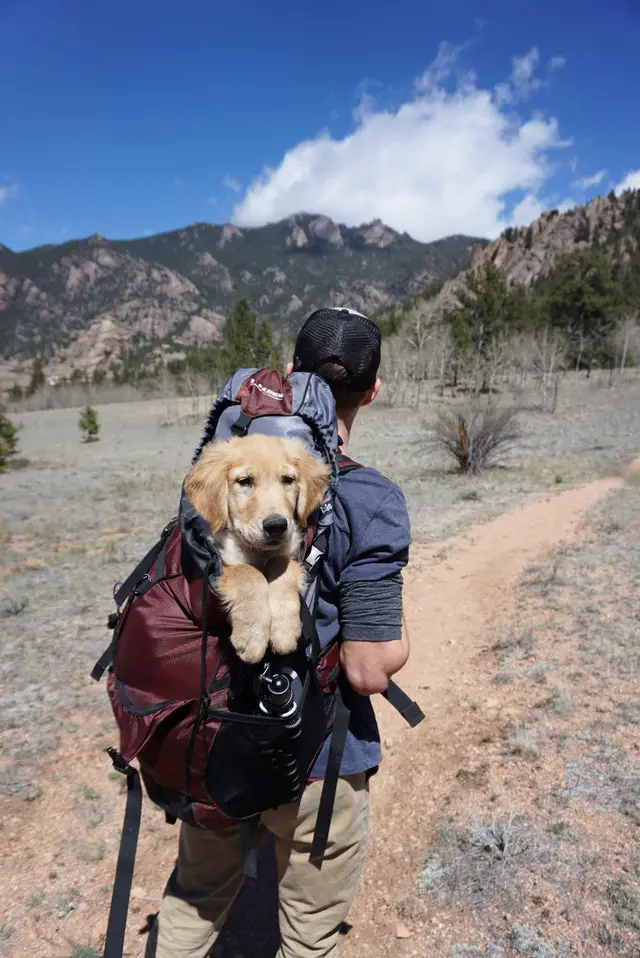Whether you’ll carry your dog with you for a trip or just take it to a vet, a carrier is a very useful item. It makes traveling with your dog much easier and also keeps it safe. 53% of pet owners love taking their pets for trips along with them.
This means that the demand for pet carriers is also rising. But how do you choose the right kind of carrier for your pet? Here are six useful tips.
1. Measure your baby
The first thing to do is to measure your pet to see the size of carrier it will need. Check the height and length of your dog accurately.
The size of the carrier should be large enough for it to turn around comfortably or stretch and sit. In order to measure properly, check the length from its neck (where the collar rests) to its tail base. You can even add a few inches to this length just to be on the safer side.
The shoulder height is to be measured from the top of its shoulders to the ground. You should also consider its weight while choosing the carrier.
2. Purpose of using
If you wish to buy a carrier just for short car trips or to keep it contained, it’s best to go for a lightweight carrier. They are easy to handle and carry around. In case you want to fly with your pet, you should check with the airlines regarding the carrier specifications.
You don’t want to bring the carrier along with your little one, only to discover that the carrier you’ve brought isn’t allowed. So depending on the purpose, buy a carrier accordingly.
3. Style
Here are a few styles of dog carriers that you might be interested in:
a. Standard hard-sided carriers
These carriers are extremely durable and have a rugged construction. The hard outer shell provides protection to your dog and is also quite easy to clean. Hard-sided carriers are sometimes allowed in many airlines for flight travels. A top-loading carrier is easier to handle as you can open the lid and place your dog inside.
b. Soft-sided carriers
These carriers are especially popular among small-breed dogs. Some airlines can even allow these carriers to be carried under your seat in the flight. The sides of these carriers are soft and can be easily carried from one place to another. Since they are folded, storing them is also easy. SIft-sided carriers are meant to be light and portable so that carrying them is not a hassle.
c. Wearable carriers
These carriers have been inspired by the wearable baby carriers that many parents use. When you use this, the carrier clings to your body. As a result, you don’t have to use your hands at all. One problem with wearable carriers is that it can only be used if your dog is tiny.
Larger dogs often feel uncomfortable, cramped between their owner’s body and the carrier. Shoulder-sling carriers allow your dog to poke its head out and see the surroundings happily. Wearable carriers are washable, lightweight, and come with zippers.
d. Backpacks
These are also different types of wearable carriers. They can be used as a front pack or a backpack. These carriers come with adjustable straps and holes for your furry friend to snuggle comfortably.
e. Wheeled carriers
No matter how tiny your baby is, it can start to feel very heavy after lugging the carrier around for hours. To ease this discomfort, wheeled carriers are now in use. Not only can you rest your arms comfortably but your dog too doesn’t get jostled around. Be sure to check with the airlines if you’re planning to take a wheeled carrier with you on board.
Your dog’s comfort doesn’t only depend on the carrier it’s inside. A healthy dog also needs a healthy quantity of premium dog food. In order to give only the best to your baby, check out Glow Pet Food. It has a variety of Australia chicken and lamb options for your pet’s dietary needs. So the ext time you think of good pet food, think of Glow Pet Food!
Over to you…
Dog carriers aren’t just meant for tiny poodles or chihuahuas. No matter what breed or age your dog belongs to, a carrier is an efficient way of traveling with your dog. So research well and buy one that suits both of you the best.




